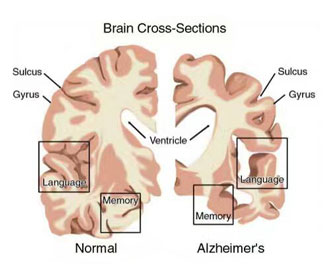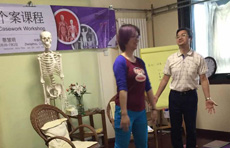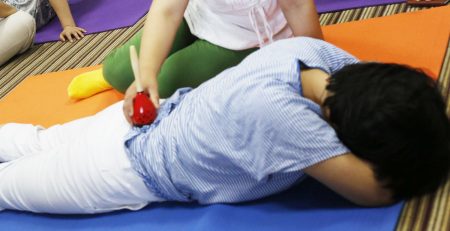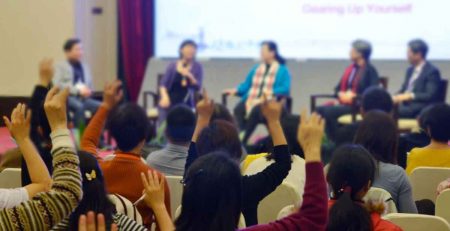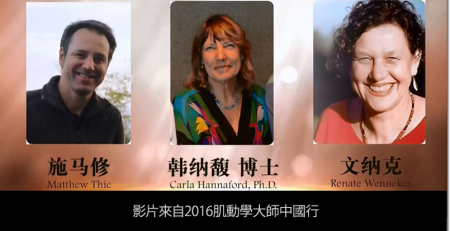Keeping the Brain Young
By Conrad Ho, Hong Kong, 30 December 2016
According to scientists, the human brain is the most developed, biggest and heaviest around the age of 40. Thereafter, it will shrink by 5% every decade. Inadequate care of the brain may result in 20% neuron loss by the age of 70, i.e. brain degeneration! However, this 5% every decade is only the average situation. There can be exceptions. It is possible to keep the brain young till one passes on.
There is a convent in Minnesota, U.S.A. where nuns joined the clergy for life at a young age. They went through a screening process before being admitted. In support of their applications, every girl had to write a letter to describe her life then. After admission, everyone followed the same life style, same daily routine and diet, and same timetable for the rest of their lives. Researchers noted this particular situation. They began to compare the letters written by the nuns when they were young and the rate of brain degeneration when they got old. They wanted to explore if there was any correlation between character traits at an early age and the occurrence of dementia.
The inspiring discovery was that those girls who wrote simple letters with crude writing styles had a higher chance of dementia at a much worse degree than those who wrote letters with rich contents in refined writing styles. Researchers made the following conclusion: Parents’ bed time stories and pillow talks would not only foster imaginations and enrich emotional lives of children, they would also have a long term effect of keeping the brains young several decades later.
The British Royal College conducted a research in 2016. They invited several dozens of male and female volunteers aged 70 years old and divided them into two groups at random: the table tennis group and the walking group. Before training, all volunteers took a written test on their cognitive function and underwent a detailed brain scan. These allowed the researchers to determine the respective baseline of each volunteer. For the subsequent 10 weeks, the table tennis group would be trained for an hour twice a week; the walking group would have half an hour fast walking every day. After training, they re-took the cognitive function written test and underwent another brain scan. It was found that the cognitive function of the walking group improved and the number of their hippocampus neurons increased twice as much as those of the table tennis group. On the other hand, the number of cerebral cortical neurons of the table tennis group increased several times more than that of the walking group and they also had a much better positive to negative emotion occurence ratio than the walking group.
10 symptoms of Alzheimer
Daily life is being affected by Amnesia
Feel hard to handle daily tasks
Difficult on verbal expression
Feel lost on time and direction
Decline in judgment
Decline in abstract thinking ability
Lost things
Changes on behaviors and emotions
Changes on personality
Loss of initiative
Resources from Alzheimer Society of BC
The researchers concluded that fast walking, an aerobic exercise, helped raise cognitive ability and memory function. On the other hand, table tennis could enhance thinking ability and emotional life. Researchers considered that fast walking increased blood circulation to the head, stimulating cognitive functions and enhancing the activities of hippopotamus. Table tennis was a completely new activity to many volunteers. It involved a lot of hand-eye coordination. Learning such a new skill promoted the brain’s cortical functions. Also, since table tennis was a team-based competitive game, it made volunteers happy and positive.
The third research was conducted in Okinawa, Japan, where the highest density of centenarians in the world was boosted. It is also one of the places with the least occurrence of dementia. After years of longitudinal study, researchers concluded that 1) Okinawan people paid a lot of respect towards the elderly in terms of legal requirements, social life and everyday facilities. All these provided the elderly with sufficient self worth; 2) Okinawan people ate a lot of purple sweet potatoes which contained anthocyanidin. This chemical helped keep the blood vessels young, soft and flexible. Many dark-coloured vegetables and fruits, especially the purple ones, such as blackcurrants, blueberries, red grapes, purple cabbage and red apples, also contain lots of anthocyanidin; 3) Many Okinawan people participated in social and communal activities which made them happy and gave them a reason to get up in the morning; 4) Most Okinawan elderly participated in various group games and sport activities on a regular basis, such as karate, farming, swimming, diving, cycling, etc. In this way, they could exercise their bodies and release their emotions.
Following the publication of more and more research reports, it has become increasingly clear that dementia is not inevitable. It can be slowed down through appropriate diet and life styles to the point that its effects are not obvious even at an advanced age. Start training from today onwards, keeping not only the body strong but also the brain young!

